5.5 Interpretation and Translation Work
Much of my work has been translation rather than interpretation, and much has been done in Taipei and not necessarily related to Buddhism. But a translator seated in front of a computer hardly makes for an interesting picture! The following photographs show several of the events and places I’ve been in the course of work and for which there happened to be a photographer present, mainly while interpreting (CI or whispered SI) for Ven. Sheng Yen, founder of Dharma Drum Mountain, Taiwan. I’m not sure who took many of these photographs, although I believe most or all of those taken in Russia are by Hanliang Chen.
Webpage established: 15 January 2009 Last update:
4 May 2010
| Place the pointer over the image you wish to see in more detail. |
 |
| 5.5.1 |
|
 |
5.5.2 |
|
 |
5.5.3 |
|
 |
5.5.4 |
|
 |
5.5.5 |
|
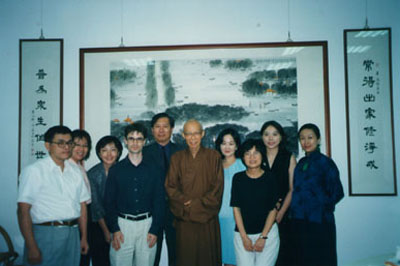 |
Fig. 5.5.1. A dinner with prominent Taiwanese interpreters, many of whom would later be my teachers in a course in consecutive interpretation. The man to the far left is Antonio Hsieh 謝安建, my colleague in the International Affairs Office of DDM (Sept. 2001). |
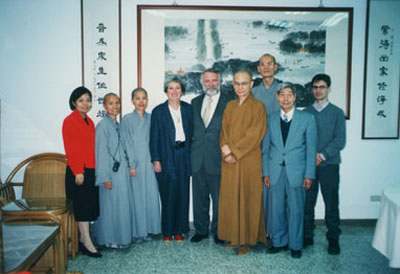 |
Fig. 5.5.2.After a day of interpreting for visiting guest Rabbi Awraham Soetendorp of the Netherlands, a founding member of the World Council of Religious Leaders. My strongest memory of Soetendorp is that he liked to speak about how to relate to other people, his philosophy for which was based largely on Martin Buber’s ideas. Ven. Huimin hosted Mr. and Mrs. Soetendorp for a dinner at Nongchan Monastery. The tall monk in the back is Ven. Changzhi, my supervisor in the International Affairs Office. The man to my right and front is Li Zhifu, former director of the Chung-Hwa Institute of Buddhist Studies (Nov. 2001). |
 |
5.5.6 |
|
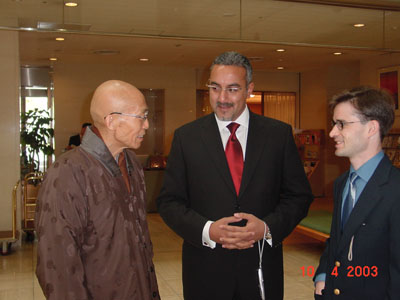 |
Fig. 5.5.3. Interpreting for Sheng Yen in Kyoto during a regional planning conference of the World Council of Religious Leaders. I believe the man in the middle is the son of the Grand Mufti of Syria, who is attending as a representative of his father (10 April 2003). |
 |
Fig. 5.5.4. Interpreting for Sheng Yen in Kyoto, with Bawa Jain and a Thai monk present (April 2003). |
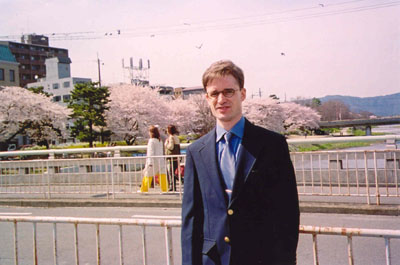 |
Fig. 5.5.5. I have no other photos of the various meetings and official events in Kyoto. But thanks to Taiwanese who attended, I do have several photos taken after the official events, such as this one of me taking a walk in Kyoto (14 April 2003). |
 |
5.5.7 |
|
 |
5.5.8 |
|
 |
5.5.9 |
|
 |
5.5.10 |
|
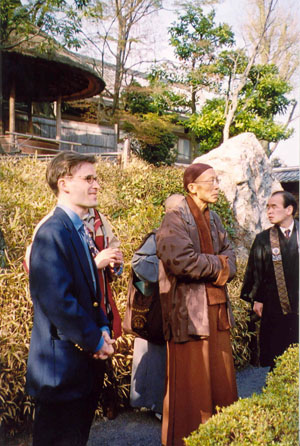 |
Fig. 5.5.6. During a behind-the-doors tour of a major Jodo Shinshu monastery in Kyoto (14 April 2003). |
 |
5.5.11 |
|
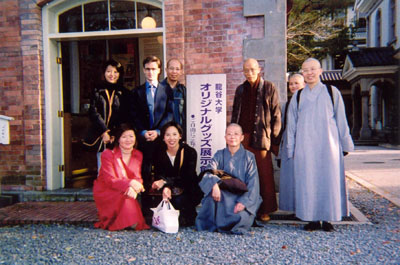 |
Fig. 5.5.7. During a visit to Ryukoku University, Kyoto (14 April 2003). |
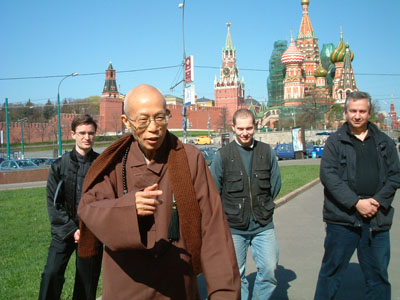 |
Fig. 5.5.8. In front of St. Basil’s Cathedral, Moscow (8 May 2003). |
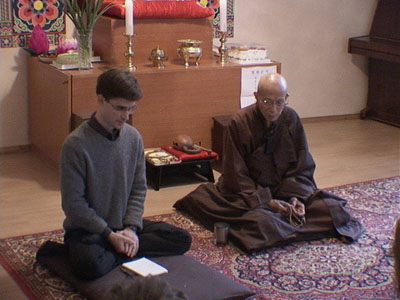 |
Fig. 5.5.9. Interpreting in a Korean Monastery in Moscow (7 May 2003). |
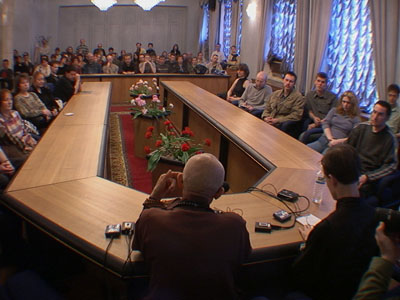 |
Fig. 5.5.10. Interpreting in downtown Moscow during a public lecture (8 May 2003). |
 |
5.5.12 |
|
 |
5.5.13 |
|
 |
5.5.14 |
|
 |
5.5.15 |
|
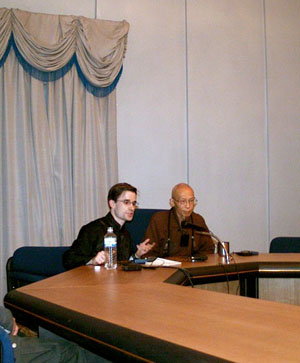 |
Fig. 5.5.11. Interpreting in downtown Moscow during a public lecture (8 May 2003). |
 |
5.5.16 |
|
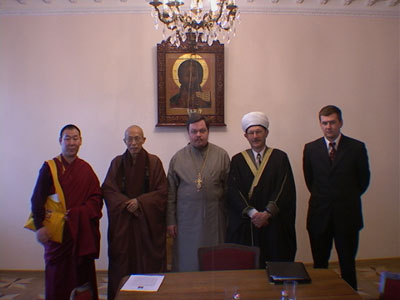 |
Fig. 5.5.12. Sheng Yen meeting in Danilov Monastery, headquarters of the Russian Orthodox Church, with religious leaders representing Russian Orthodox Christianity, Islam, and Buddhism. I believe the Russian Buddhist representative was a Kalmyk, but he might have been a Buryat (8 May 2003). |
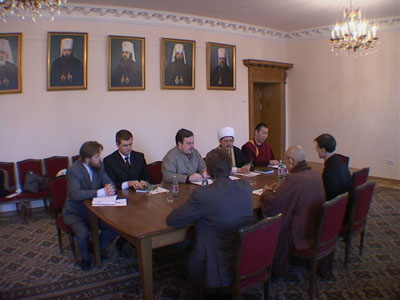 |
Fig. 5.5.14. Interpreting during the interreligious meeting in Danilov Monastery (8 May 2003). |
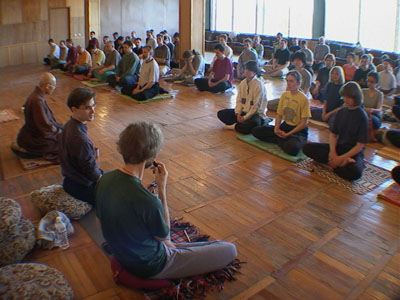 |
Fig. 5.5.15. Relay interpretation (Chinese—English—Russian) during a seven-day meditation retreat in an old worker’s guesthouse in the countryside outside of Moscow (9 May 2003). |
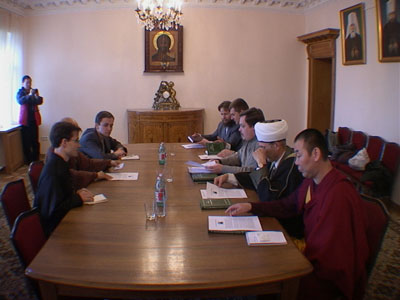 |
Fig. 5.5.13. Interpreting during the interreligious meeting in Danilov Monastery (8 May 2003) |
 |
5.5.17 |
|
 |
5.5.18 |
|
 |
5.5.19 |
|
 |
5.5.20 |
|
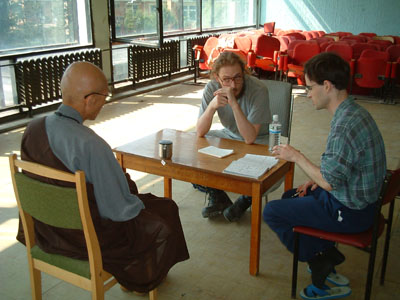 |
Fig. 5.5.17. Interpreting during a personal interview during the meditation retreat. When the interviewee could speak English, relay interpretation was not necessary (15 May 2003). |
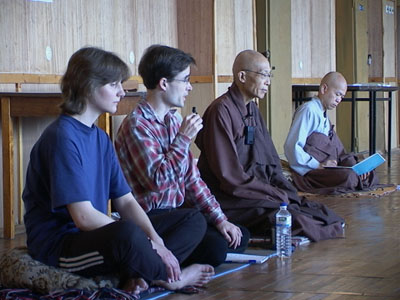 |
Fig. 5.5.16. More relay interpretation in Russia. The monk to the far right is Ven. Guoyuan, a senior disciple of Sheng Yen. |
 |
5.5.21 |
|
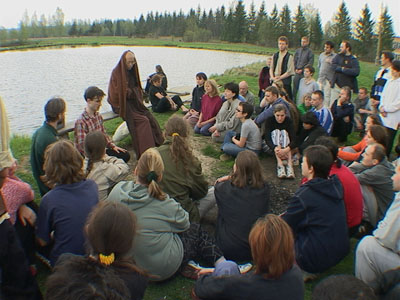 |
Fig. 5.5.19. Interpreting during an outdoor talk in the Russian countryside (12 May 2003) |
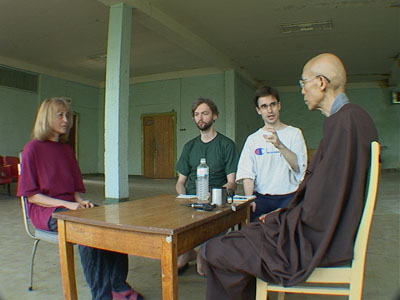 |
Fig. 5.5.18. Relay interpretation during personal interview (14 May 2003). |
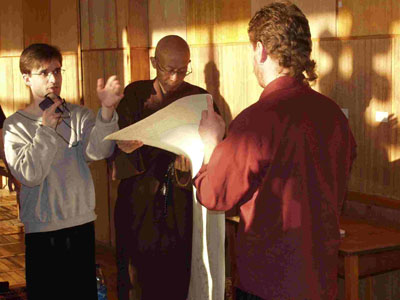 |
Fig. 5.5.20. Interpreting during a closing ceremony (15 May 2003). |
 |
5.5.22 |
|
 |
5.5.23 |
|
 |
5.5.24 |
|
 |
5.5.25 |
|
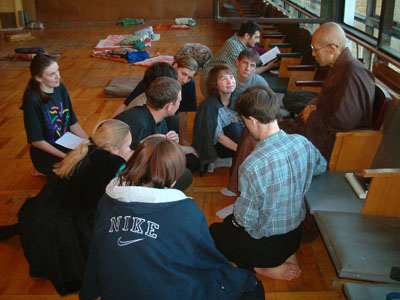 |
Fig. 5.5.21. Interpreting during a small-group meeting after the retreat (15 May 2003). |
 |
5.5.26 |
|
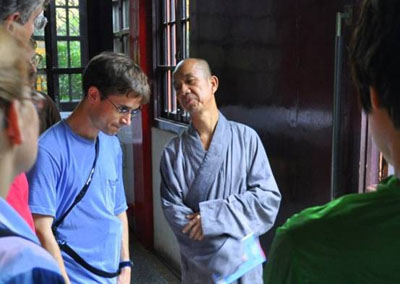 |
Fig. 5.5.25. Interpreting for the guest prefect monk at Gaomin Monastery, Yangzhou, Jiangsu (Justin Whitaker, 23 July 2009) |
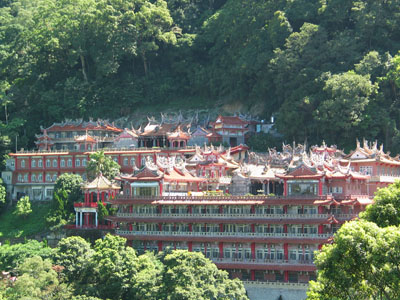 |
Fig. 5.5.24. The Quanhuatang religious complex, Miaoli County, Taiwan (Douglas Gildow, 30 July 2004). |
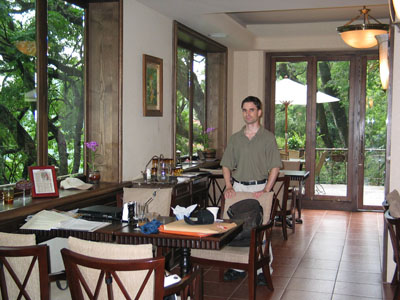 |
Fig. 5.5.23. In the Quanhuatang religious complex coffee house, translating for the director of the Quanhuatang. In Miaoli County, Taiwan (Liyu Wang, 3 Aug. 2004). |
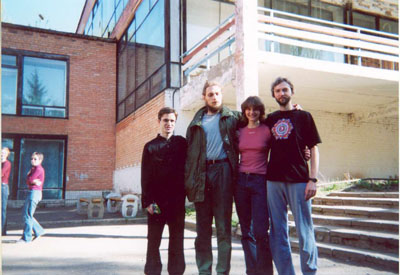 |
Fig. 5.5.22. The team of interpreters during the seven-day retreat in Russia. The other three did English—Russian interpreting (15 May 2003). |
 |
5.5.27 |
|
 |
5.5.28 |
|
|
|
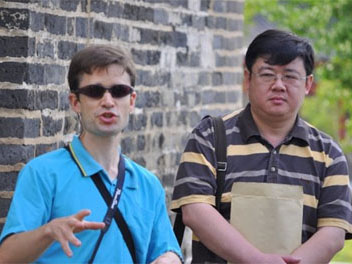 |
Fig. 5.5.27. Interpreting for a local scholar at the Asoka Stupa, Lianyungang, Jiangsu (Justin Whitaker, 25 July 2009) |
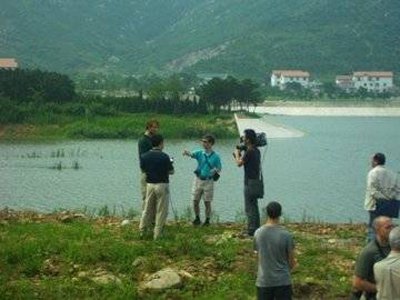 |
Fig. 5.5.28 Interviewed for local TV station, Lianyungang, Jiangsu (Matt Mcmullen, 25 July 2009). |
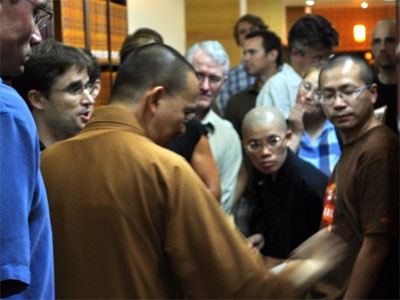 |
Fig. 5.5.26. Interpreting in Jianzhen Library, Yangzhou, Jiangsu (Justin Whitaker, 24 July 2009) |
|
|
|
|
|
GLOSSARY
to translate: to produce a written translation in a target language based on a written text
in a source language
to interpret: to produce an oral translation in a target language based on aural inputs in
the source language
sight translation: production of an oral translation based on written materials in the
source language
relay interpretation: production of an oral translation based on aural inputs that are
themselves interpretations of aural inputs from a source language. Example: interpreting from Mandarin Chinese into English and then interpreting the English into Russian.
CI: consecutive interpreting, as opposed to simultaneous interpreting (SI)
Go to Next Album
|
